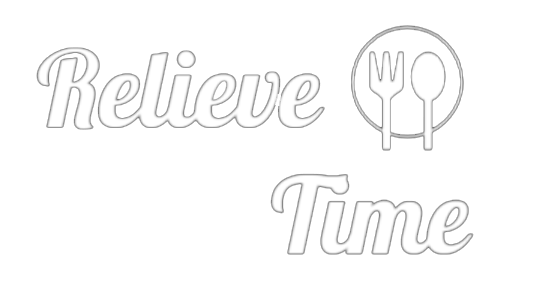The New Vocabulary of Wine
Since we last chronicled the new vocabulary of wine, a half-decade ago, wine culture has drastically changed. The way we shop for bottles has been reimagined, and how much we drink (if at all) has been reconsidered. Natural wine became entangled with the internet, so much so that posting about it is now a viable career path for a duo of wine-tasting influencer twins, a shitposting wine critic and several online personalities dedicated to making wine more accessible, or at least more fun. The scene got irony-pilled—cue the “Natural Wine Sucks” T-shirts of just a few years ago—and has now circled back around to a full, unironic embrace of the things many once stood resolutely against, like establishment red wines, while pét-nat and piquette became passé. Are you following?
Experts Featured
Colleen Allerton-Hollier is the director of education and events at Leon & Son in Brooklyn, New York.
Nader Asgari-Tari is the director of wine at Boston’s BCB3 restaurant group.
Marie Cheslik is the creator of Slik Wines and author of the forthcoming How To Read A Wine Label.
David Cortes is the lead sommelier at Majordomo in Los Angeles.
Kayleigh Fair is the assistant general manager at June’s All Day in Austin, Texas.
Andrew Fortgang is the co-owner of Le Pigeon and Canard in Portland, Oregon.
Yann Janvier is the sommelier at Terra Restaurant in Paris.
Ren Peir is the wine director in residence at Nin Hao in Brooklyn.
William Simons is the director of operations and wine director at Albi in Washington, D.C.
Eitan Spivak is the lead sommelier at Kabawa and Bar Kabawa in New York.
If you’re confused, you’re not alone. The wine world is fractured. For every person in a wine meme page’s comments saying natty is dead, there is a blissfully offline wine enthusiast with no idea what you’re talking about. And, for the most part, we can’t even seem to agree on what the relevant terms mean.
“I am someone who knows how to do the wine talk, but also knows how ineffective it can be,” says Marie Cheslik, a former wine director and the creator of Slik Wines, a platform for wine education. “People have a hard time describing wine naturally… [ They say ] , ‘I want something that’s dry’, or ‘fruity,’ but I don’t even think we’re all on the same page, as a society, about what that means. It is almost too subjective.” A universal wine language does not entirely exist.
So how do you talk about wine, which has only gotten more expansive and convoluted in the past five years, in a meaningful way? Trite as it may sound, you have to take it offline, and you have to taste—and talk about it—with others as much as you can.
“I think it’s important for people to, at the risk of sounding so corny, be curious,” says Colleen Allerton-Hollier, director of education and events at Leon & Son, a wine shop in Brooklyn, New York. “You won’t know what to call something unless you’ve experienced it.”
In the meantime, here’s your cheat sheet to the wine words to know right now.
Aeration: Literally adding oxygen (via air) to wine. For centuries, people have come up with all manner of gadgets and hacks to aerate their wines. According to Punch contributor Saman Hosseini, it’s “a symptom of early-aughts drinkers’ ceaseless desire for ‘smoothness’” and a way to flex your Sharper Image purchase.
Baby fat: For Nader Asgari-Tari, director of wine at Boston’s BCB3, “baby fat” can be a useful way to describe “the temporary roundness and characteristics associated with younger wines that have lots of flesh and will assuredly lose some of that [texture].” As certain wines, like an albariño, mature, they may lose some of that texture (aka baby fat) and fall more into balance.
Big Red Wine: Bolder, fuller-bodied red wines like Bordeaux and Barolo. As Punch contributor Eliza Dumais reported, Big Reds represent a pendulum swing for the wine world, partly in reaction to the now years-long reign of “chilled reds” like gamay and Beaujolais at natural wine bars and shops everywhere.
Budget banger: A useful term from the retail floor at Leon & Son. “A budget banger, to me, is the best way to communicate to someone that they’re getting a great deal,” says Allerton-Hollier. These wines punch above their weight for their price, like an entry-level wine from “a producer who [also] makes really expensive or allocated wines.”
Clean: Can refer to the flavor and texture of a wine (see also: “Crisp/crispy”), while some, confusingly, use it to describe the way a wine is made—sustainably? naturally? Like the nebulous diet culture phrase “clean eating,” it can be unclear.
Conventional: Generally used to describe the opposite of “natural” wines.
Crisp/crispy: Lately, it seems “crisp” is meant to convey a vibe more than any actual characteristic. “‘Crisp white wines’—I hear that all the time [requested] on the retail floor,” says Allerton-Hollier. “‘Nothing sweet. No Chardonnay.’ It’s like, Aw, man, what if you had something with texture?” As Bustle reported last month, white wines that mostly just taste “cold” “are back” in a “semi-ironic, intentional self-bimbo-ficiation” way. To that I say: What the hell, sure.
Crunchy: This term refers to structure, describing high-acid wines with a brittle characteristic. Though it’s not new, the word is “ascendant” among wine drinkers, but has grown to “become a kind of shibboleth,” says William Simons, wine director at Washington D.C.’s Albi, who feels it may be time to retire the buzzword in favor of clearer descriptions.
Crushable: A bro-y catchall for “easy-drinking” that isn’t just limited to wine, but also beer, seltzer and cocktails. As Punch contributor Danny Chau writes, “Its value lies in its universality.”
